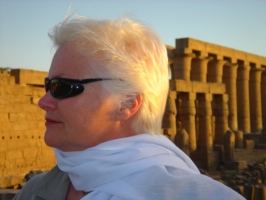The Guernsey Literary and Potato Peel Pie Society, a book set on this island, was read by perhaps every book club in the United States, including mine in Salt Lake City. Mary Ann Shaffer and Annie Barrows’ book, published in the US in 2007, is set during the occupation of Guernsey by Nazi soldiers starting in 1940. Various monuments along the island’s waterfront commemorate the liberation of the island in 1944.
A grim and true part of the book was the description of the Todt workers (named for engineer Fritz Todt, shown at left) brought to Guernsey by the Nazis. These conscripts were an assortment of 16,000 men and boys from Germany’s Occupied Territories, political prisoners, Russian prisoners of war, and 1% of the German men who could not pass the physical. They were often worked to death as part of Heinrich Himmler’s plan of “Death by Exhaustion.” I saw no memorials to them.
I boarded the Condorferries express in Weymouth, sitting in an assigned seat, rolling and dipping for two-and-a-half hours east across the English Channel, to Guernsey, a Channel Island. My stamped passport was enough (so I didn’t need a new stamp), as Guernsey is a British crown dependency. Some passengers were sick from the bumpy ride, though I am happy to report my stomach was fine, and the return trip was smooth as custard.
The French writer Victor Hugo (1802–1885) was forced into exile after criticizing Napoleon III and lived in Guernsey from 1855 to 1870 with his wife, Adèle, in Hauteville House. Hugo’s mistress, the actress Juliette Drouet, also lived on the island in another, more modest house down the street. Hugo’s affair with Drouet lasted 50 years, and she reportedly wrote him an astonishing 20,000 letters. While living on Guernsey, Hugo wrote Les Miserables and set his novel Les Travailleurs de la mer (Toiler of the Sea) on the island.
Hauteville House is a lemon-yellow row house on rue du Hauteville, up from the harbor. Hauteville House was not open to the public. Even a photo op is denied since the explanatory plaque on the wall is behind a tall, black, iron fence. A computer printout in a plastic sleeve hangs in one of the windows telling visitors the house is not a museum. Okay. Maintaining even a a small museum is expensive and labor-intensive, plus it denies housing space to Guernseyans. But I still think someone could have tried just a little harder. [Update: Hauteville House is open as a museum from April through September.]
Guernsey is seven miles long, five miles wide, with a present–though shifting–population of about 65,000. Its capital is St. Peter Port. Originally part of the Duchy of Normandy, Guernsey was given to England when William, Duke of Normandy, conquered England and kept the Channel Islands’ population.
Food specialties of Guernsey include lobster, brill (a kind of flatfish), and other varieties of fish, mixed in amongst Italian, British, and French dishes. I had the spaghetti carbonara with my pot of tea at the Mora Restaurant at the tail end of the arts festival along the quays. Or perhaps it was the rainstorm that signaled the tail end of the arts festival.
Originally attached to the European landmass and separated by rising sea levels during the Neolithic period, Guernsey’s menirs (carved standing stone statues) date from that early history, including the menir La Grand mere du Chimquière, the Grandmother of Chimquière.
Auguste Renoir (1841–1919) spent the summer of 1883 in Guernsey. He painted 15 views of the rocky southern coast.
The Castle Cornet is an imposing collection of dark stone buildings at the mouth of the harbor. Originally it was a mile off the Guernsey shore and was accessible on foot only at the lowest of tides. Now you can walk by the castle on your way to the lighthouse. The Nazis used this 13th century castle as a headquarters and garrison for the soldiers during the occupation. One can certainly imagine having to make potato peel pie, since many people (including the wretched Todt workers) were being fed off the products of this one small island. The mashed potatoes were sweetened with beets, and potato peels made up the crust.
In 1066 when William, Duke of Normandy, became William I, King of England, the Channel Islands became possessions of the English Crown. In 1204, King John lost control of Normandy, but the islands remained English. Still needing to defend the Channel Islands against the French, the king then started construction of Castle Cornet.
As I walked easily along a paved causeway to the castle, I passed the fishmongers shop and a shallow area along the waterfront where people were outfitting their boats even in the spitting rain. Not much stops a boatman. The Old Quarter (complete with an iron arch that says exactly that) winds through pubs, cake shops, and beauty salons along narrow, windy, cobbled streets and steep stairways, much like you see in other medieval city centers.
The ferry I took to return to Weymouth had just come from Jersey with many passengers getting off at Guernsey. My fellow Weymouth-bound passengers and I (plus one dog) boarded the ferry, just the ten of us. And, no, there were no potato peel pies on offer on the ferry or anywhere in town.

Post a Comment